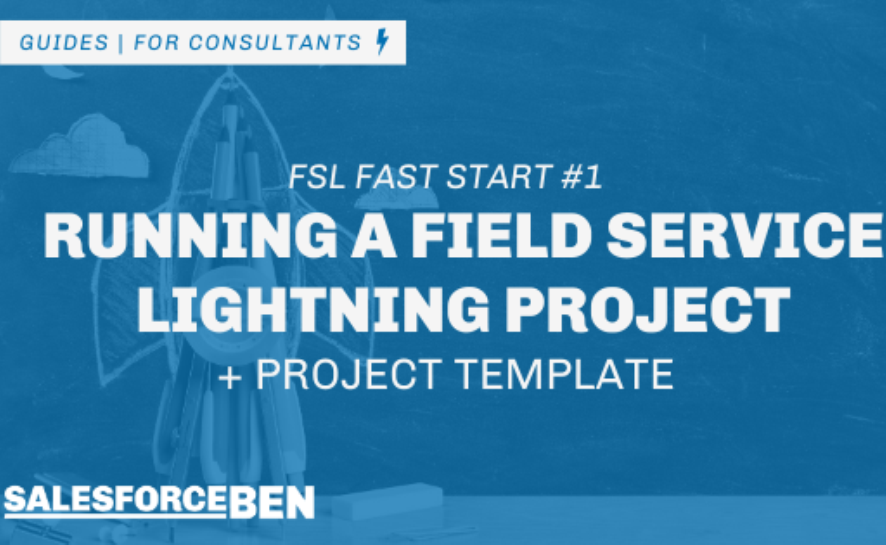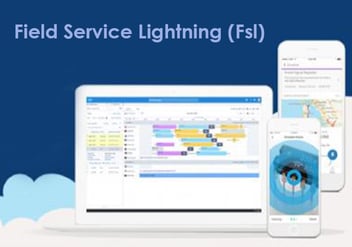Abstract:
Field Service Lightning (FSL) is a Salesforce onsite employment platform with real-time cooperation skills and facilities. It is a Salesforce’s field service solution. From system installations and restorations, expert services and maintenance, numerous organizations send their representatives into the field. The product is outstanding and acceptable to sight. Consultants should visualize a robust future in it. In this article, we will discuss the key concepts of Simple and Complex Field Service Lightning Projects.
Introduction
When inspecting any project, it’s necessary to get a sense of where the complication is, from the starting to halt the difficulties from piling up after the project. It’s important to identify some of the many sudden unexpected problems of Field Service Lightning.

Salesforce FSL Dashboard
Simple and Complex Field Service Lightning Setups
Here, we will discuss some of the main conceptual difference between Straightforward and Complex setups:
• Employment Opportunities
In a straight forward setup, employments are single visit, single resource, for example, transactions, restoration, break/fix, or even maintenance, whereas in Complex setups, employments are multi-level, take more than a single day, need more than one resource, and are dependent on appointment or part manufacturing.
• Procedures followed by the Group
Most groups in simple Field lightning setup follow equivalent but nuanced procedures, but in complex setups, there are numerous distinct processes for diverse parts of the business and each business entity should be examined individually.
• Territories
In a simple projects, domains or territories are well-defined with boundaries that are exceptionally crossed, whereas in complex projects, lots of primary, secondary, and impermanent relocation territories which change normally or are “assigned” to share the travel between diverse resources each week.
• Arrangement or Scheduling
In a simple setup, the out-of-the-box development strategies are good or appropriate for all the consumer’s assets, but in complex setup, it is necessary to create custom scheduling strategies with dissimilar rules and regulations for different areas of the business.
• Grantt View Necessities
In a simple Field Service projects, the out-of-the-box Grantt is considered as an ideal approach for all the consumer’s messengers, but in case of complex projects, Modifications such as Custom Actions are compulsory to accomplish what the messengers require from the Grantt.
• Sequencing and Planning
In a simple setups, a “Travelling agent” approach to planning appointments that commence near the home and work their approach back towards it. In Complex systems, confrontation to move from methodologies such as feeling the requirement to physically control the sequence and nature of the appointment.
• Finance Processing
In case of simple lightning projects, the information or material already accessible on the Service Appointment is sufficient to use for finance processing. Complex management for finance is required in the complex setups, for example, calculating billed versus unbilled time, or measuring billable time based on variables.
• Mobile App requirements
In a simple lightning projects, the Field Service Lightning (FSL) mobile application contains all the requirements for mobile, but this facility is sometimes not available for complex setups. For complex projects, the customer requires custom elements, pages, and flows. It’s uncertain whether FSL mobile applications will support the business necessities.

FSL Mobile App
• Bookings or Appointments management
Booking is managed within Salesforce, by the consumer’s group in straightforward lightning projects, but in Complex lightning projects, Booking is self-service and handled by external systems.
• Work Types
In simple Field Service Lightning projects, the customer has already recognized common work types that can be utilized to automatically explain durations or intervals, skills required, and resources required.
Field Service Lightning projects demand more rigorous efforts from the business group to help make it an accomplishment as compared to Sales and Service Cloud Projects.
FSL Red Flags
If you see any of the following warns of danger, make sure to accelerate it internally.
• A deficiency of buy-in from any level of investor.
• A lack of technical guidance on the customer-side.
• A large appointment group feels endangered by the system’s mechanized capabilities.
Conclusion
By concluding this article, we’ve discussed the ten fundamental key differences in simple and complex Field Service Lightning projects, so it is easier for you to mark a simple use case from a complex one. Equipped with a better understanding of this information, you will be able to start your FSL project efficiently and evade the cringe red flags.





Leave a Comment